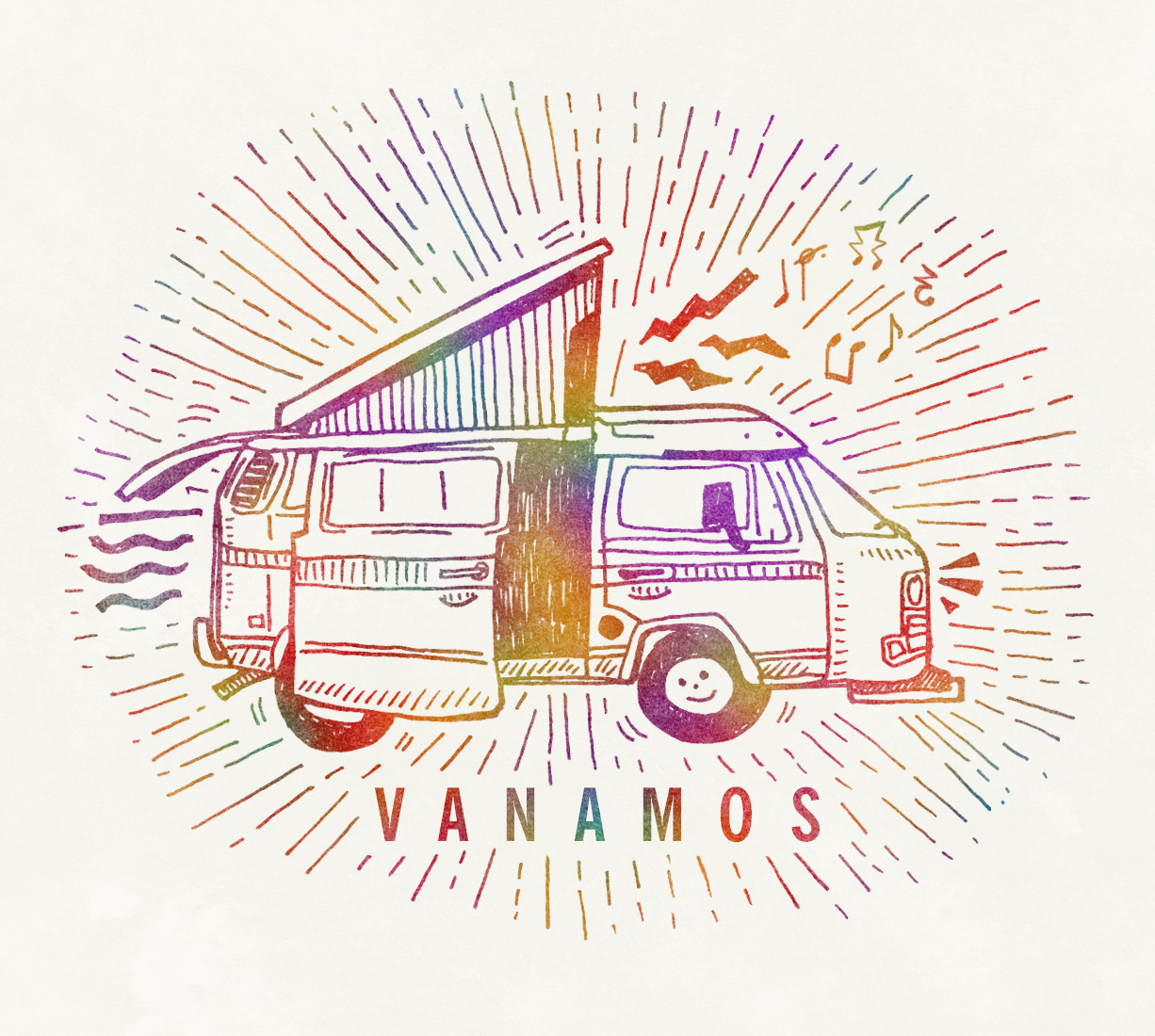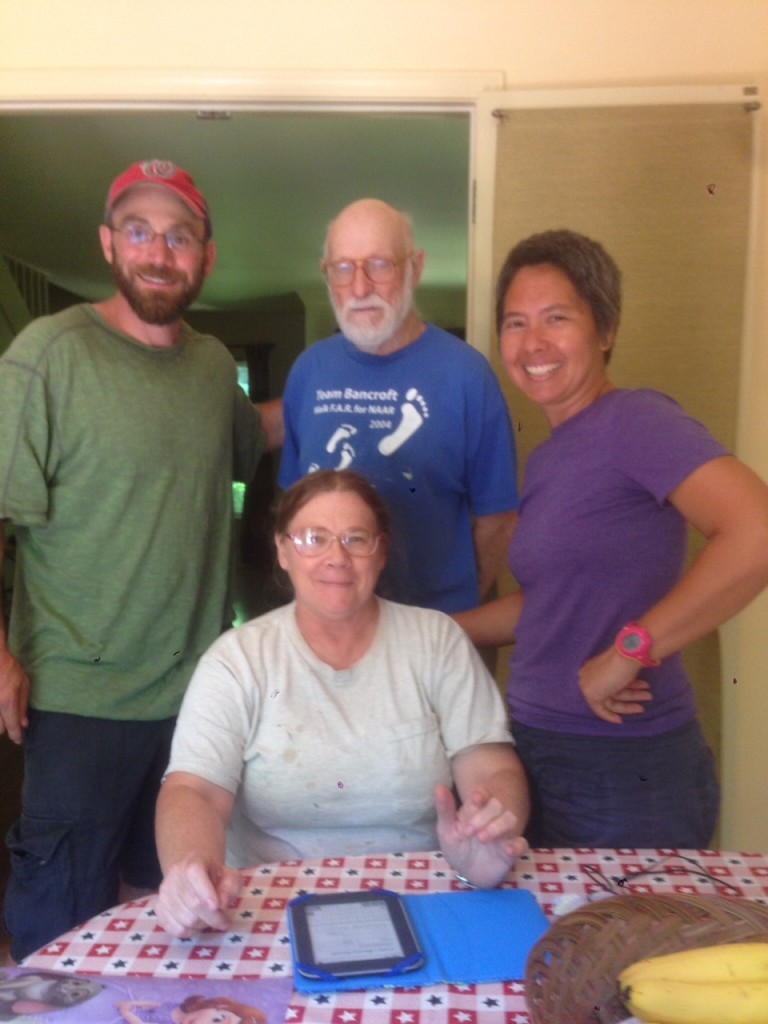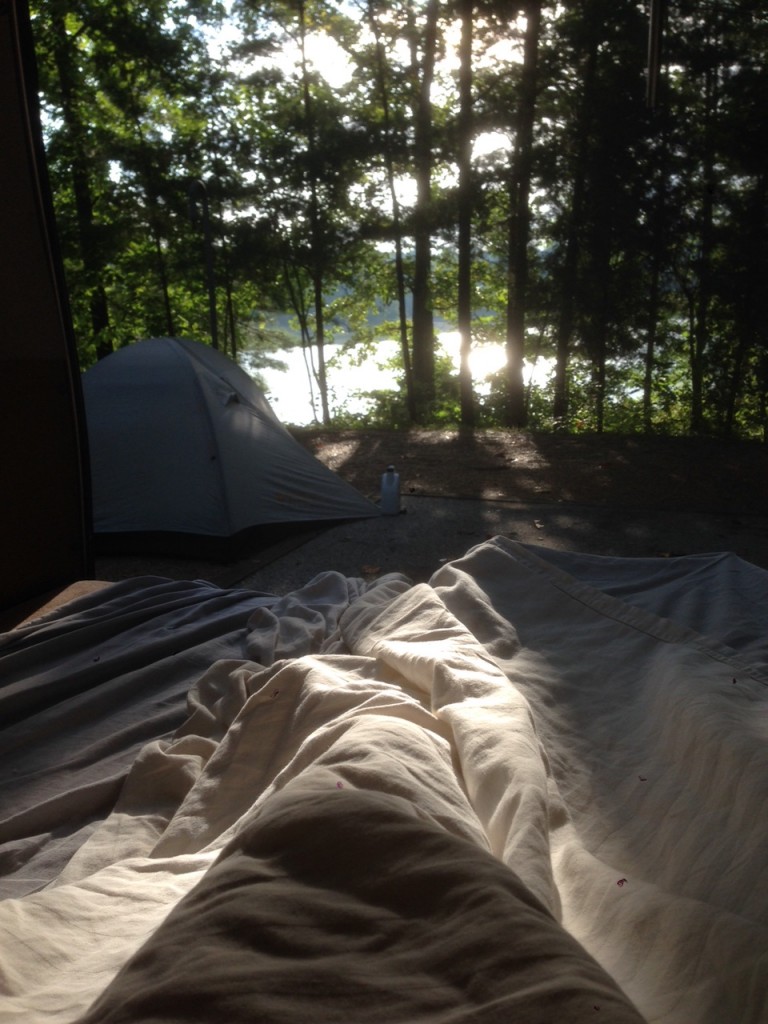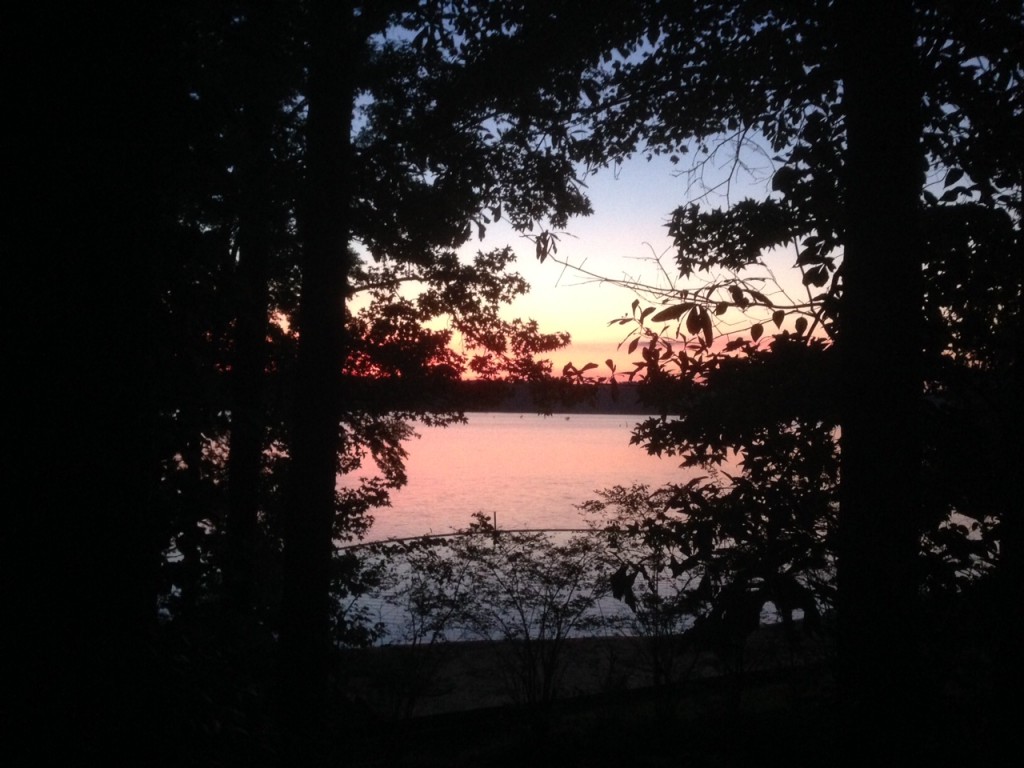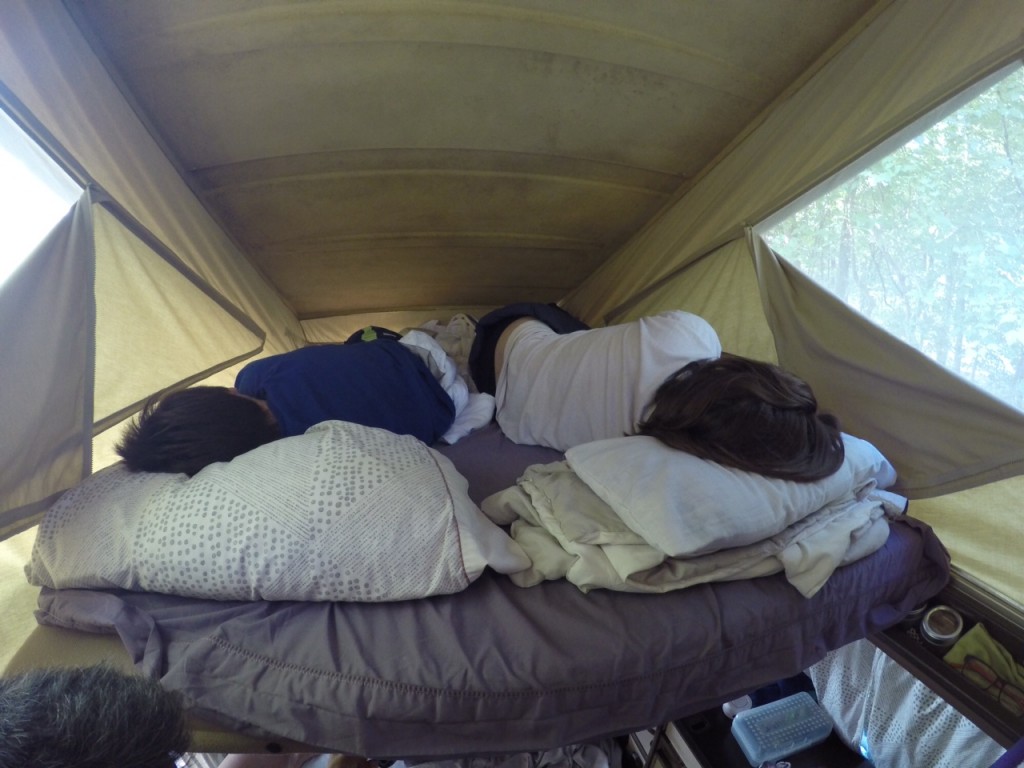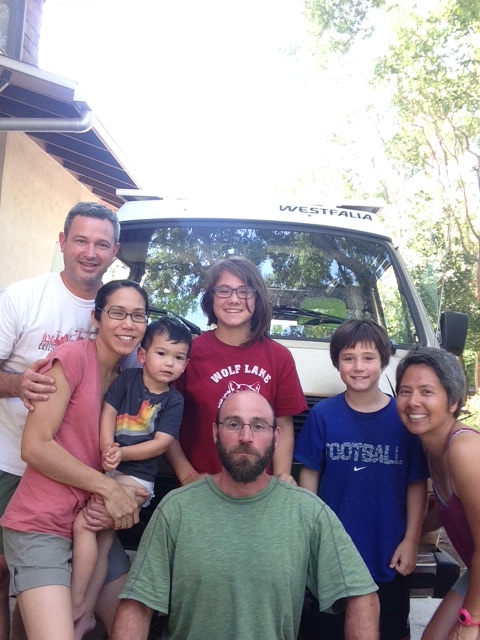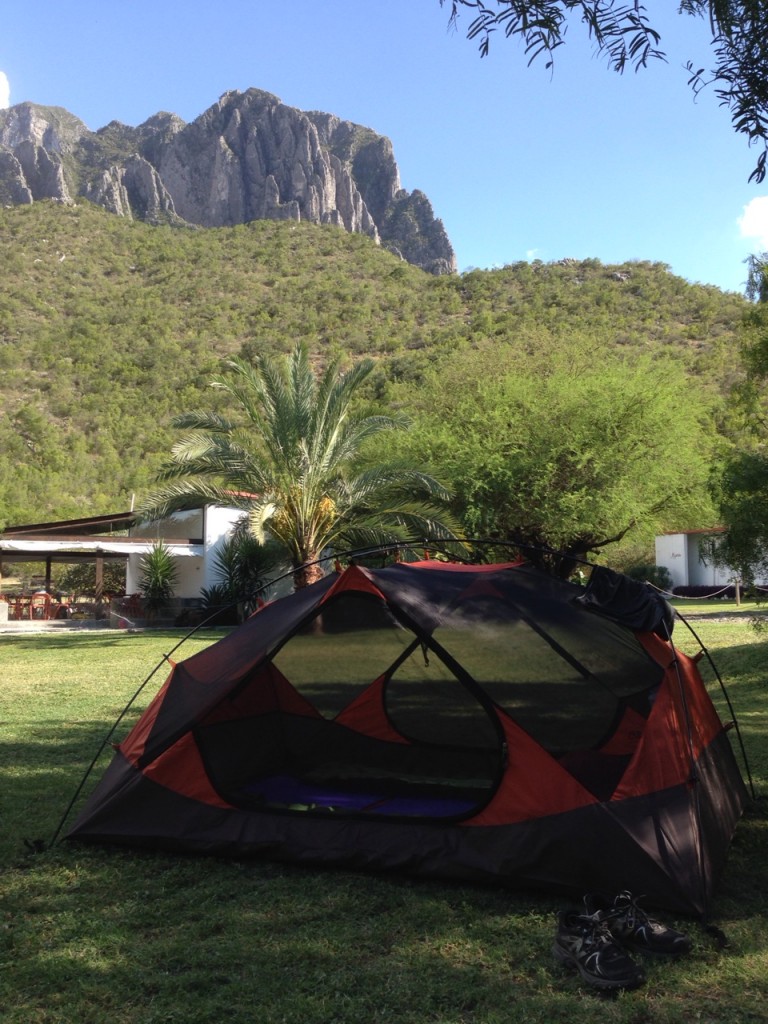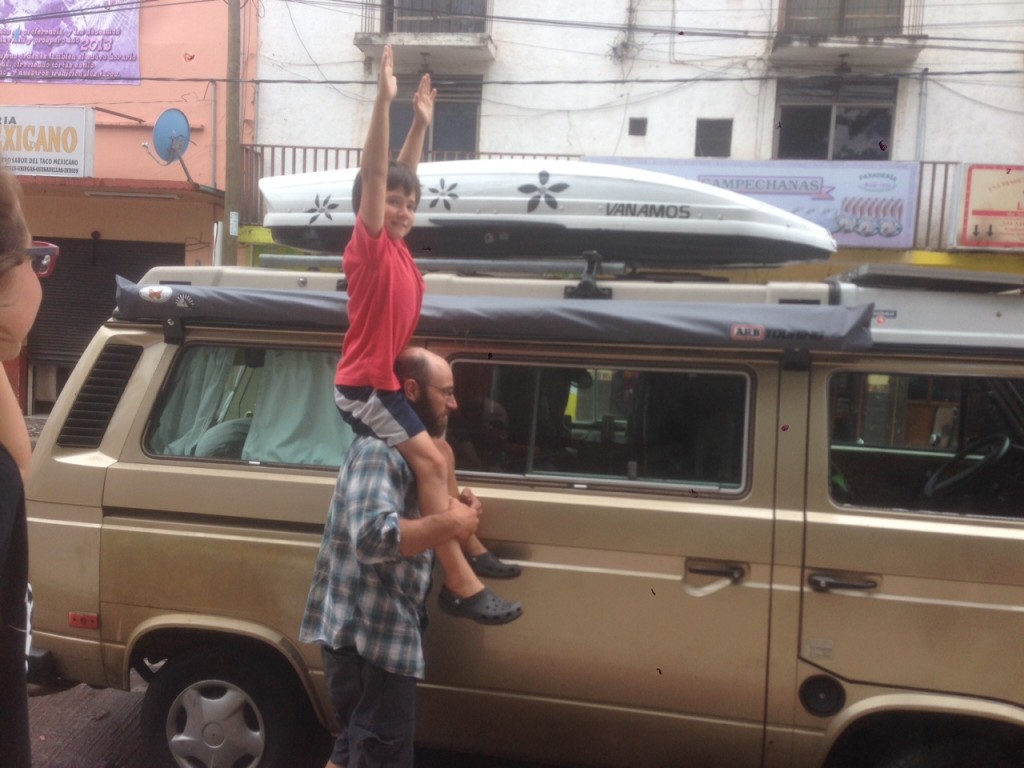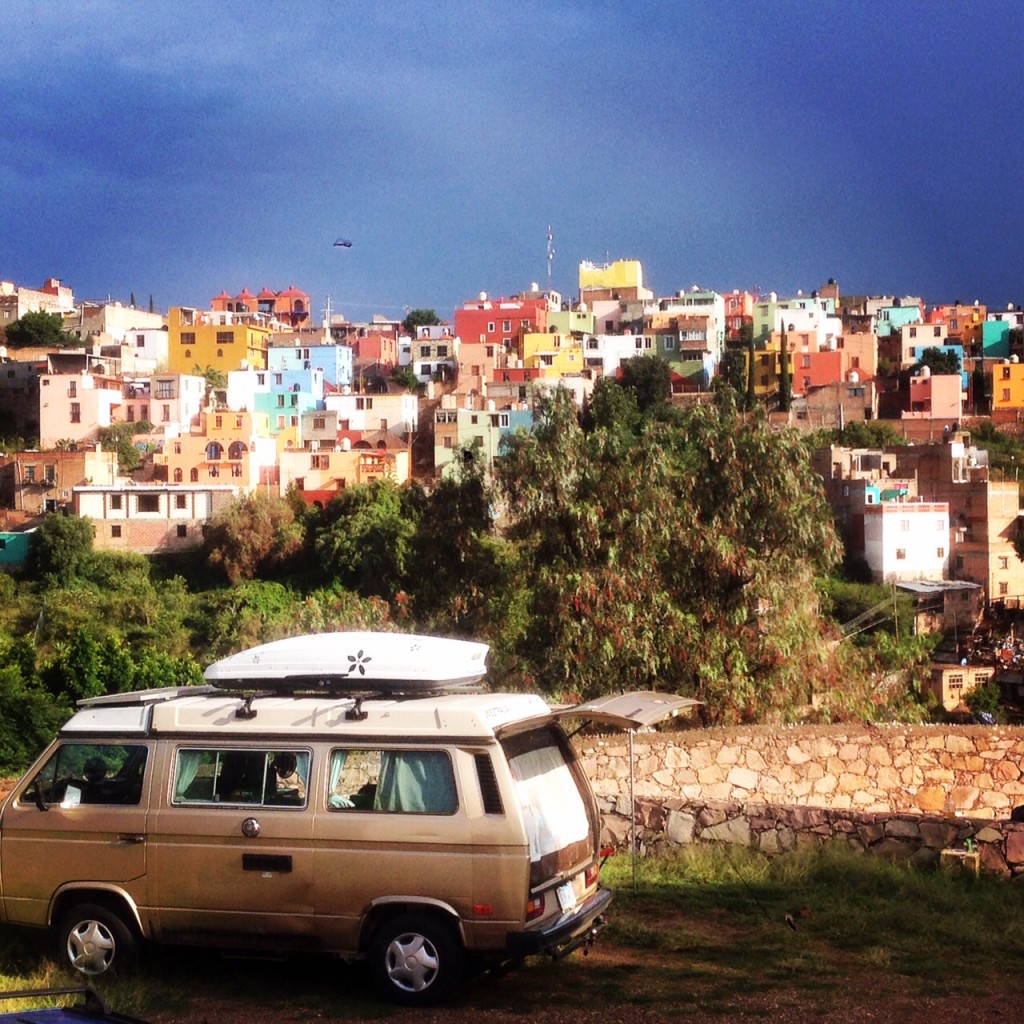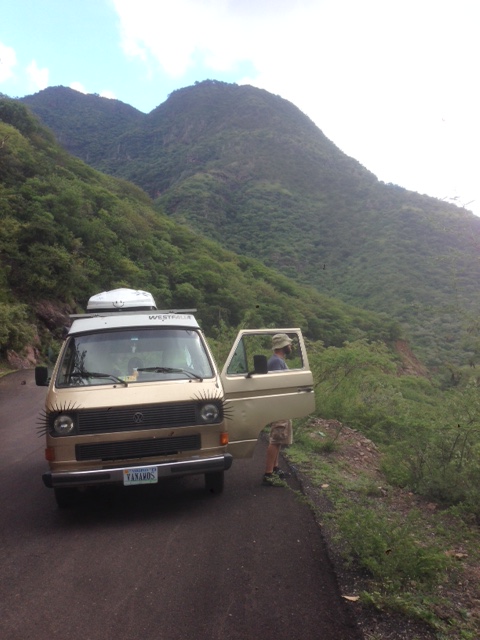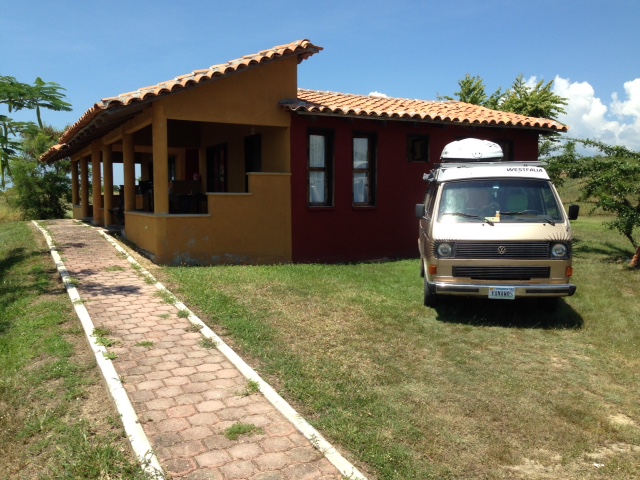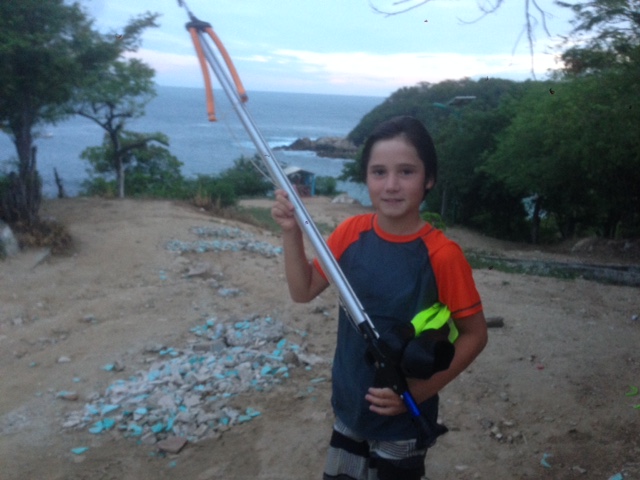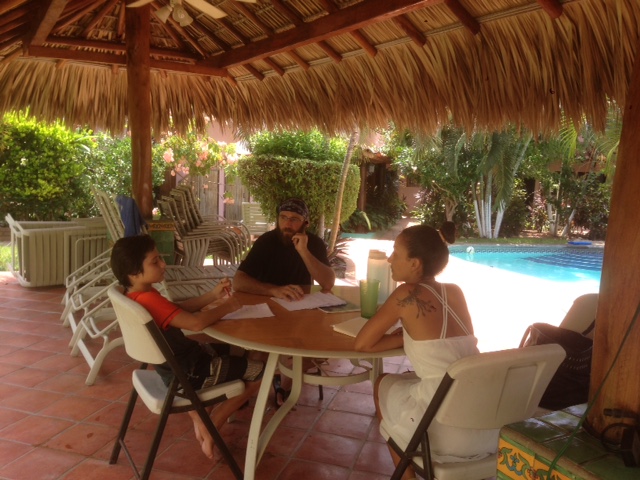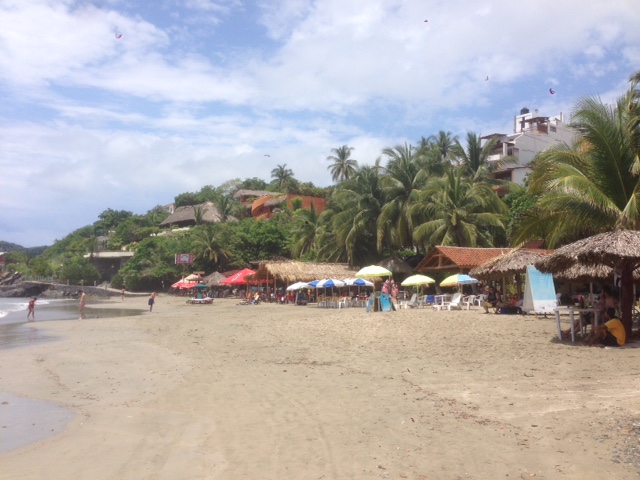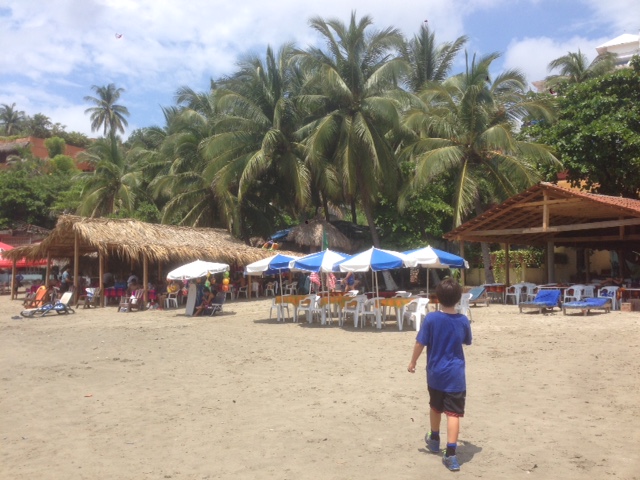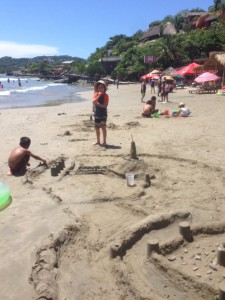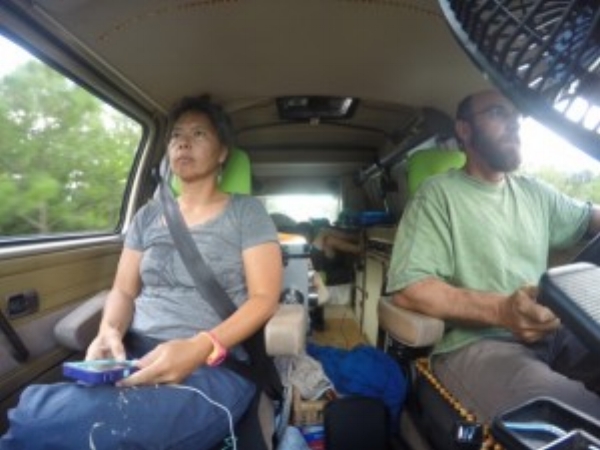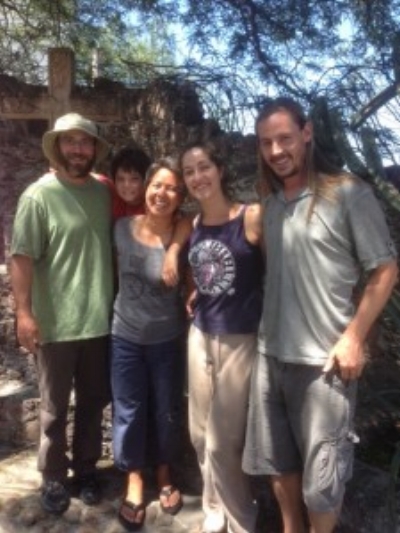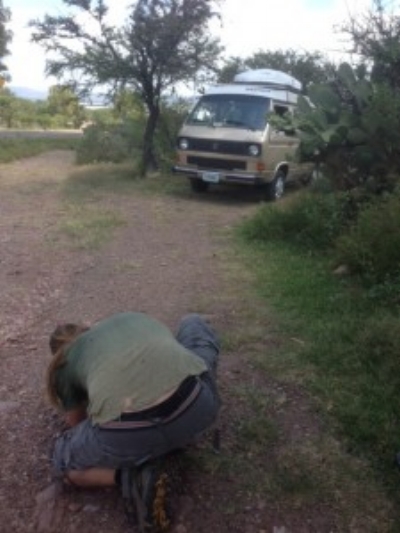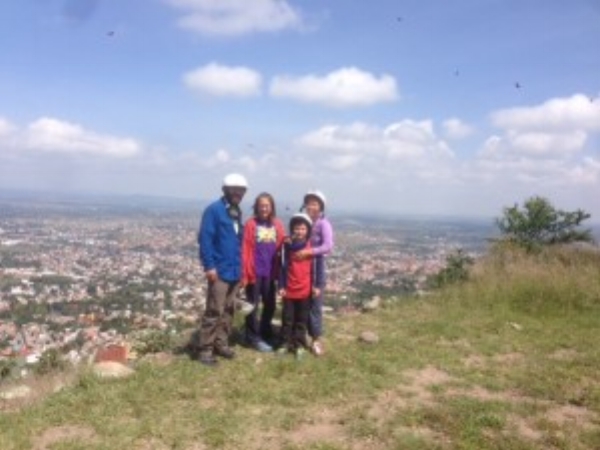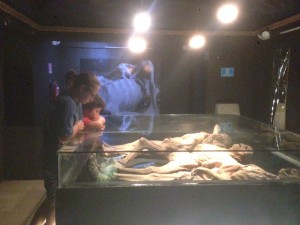In a word – food. In a Spanish word – comida.
Before we left the States we made a final visit to Trader Joe’s in Austin, which is our go-to grocery store when at home in Virginia, to load up on all our familiars like the Blistered Peanuts, Z-bars, good cheeses, granola and High Fiber Cereal. Although we don’t have a lot of that stuff left, we don’t miss it (except for the cheese) because we’ve found plenty of food in Mexico to satisfy our palate.
For example, instead of the peanuts, we’ve discovered fried plantain chips: just as salty and cheaper! Instead of TJs’ freshly squeezed orange juice in a box, we get our juice freshly squeezed at a juice stand.

R, who is a notorious fruit-stand stopper, tells this story about a trip to Baja she took years ago where the group saw a sign for oranges, stopped, and found the largest bag full of the ugliest oranges one could imagine. Having stopped, however, they felt compelled to buy, and were rewarded with the sweetest trove of fruit; the sorry looking things putting their prettier, larger, American cousins to a tail between the legs type of shame. On our first day driving in Mexico we saw a sign for oranges and stopped, of course. The cold, orange juice the man was selling was so delicious that we also brought a dollar bag of about 30 ugly oranges, and in anticipation of the sweet nectar, struggled to peel one of the dang things, only to be disappointed with the sourest, stringiest, excuse of an orange. The bag was quickly cast into the corner of Wesley and we would occasionally throw disdainful looks at it. In optimistic moments, J or I would take the five minutes or so that it took to peel one of these sorry citrus and attempt to enjoy it, however, it was never a pleasant experience and we were always left feeling used. We couldn’t even feed them to someone’s pet guinea pig, which apparently only ate oranges. When we got to SMA, J squeezed the juice out of the last 20 or so with the juicer that Sean and Mittie had, added sugar and water, and we were finally rid of them, and felt somewhat validated for buying them in the first place because he made some pretty good juice.
Another early stop was at a street side vendor selling bean tacos. Coconut and J both loved them (me too – they were 10 pesos each) and now if they don’t like what we have for lunch or dinner, or if they are still hungry after eating lunch or dinner, I can make them a bean taco with the tortillas and can of refried beans that we always try to keep on hand. Sometimes I’ll add some leftover rice from a meal we’ve had or cheese if we have something that’s not this strange Mexican version of cheese.
Because we can cook in Wesley, we make frequent grocery store stops to provision our non-perishables. We also have a fairly reliable solar set up to power the refrigerator and can keep things like milk, beer, spaghetti sauce, and leftovers from previous meals. We’ve been buying returnable five-gallon jugs of purified water and filling our water bottles and keeping those in the fridge (cold water just tastes better than hot water does when the temperatures outside reach 40 degrees Celsius) and dumping the rest in Wesley’s storage tank where we can drink it out of the tap. We don’t drink the tap water at hotels, etc., but do brush our teeth with it. We’ve got an antibacterial vegetable wash that many Mexicans add to water for soaking fruits and vegetables before eating. No one has had a serious gastrointestinal problem, yet. R was feeling poorly for a few days earlier in the trip, which was ironic because in our past travels, she’s been the solid one. (Haha. Get it?) The kids haven’t complained, and have been fairly adventurous in their eating – Coconut especially so.
The markets are amazing – the variety of fruits and vegetables, the colors, the sounds and smells, the heat and dogs. And everything is for sale; meats, household items, hardware, toys, clothes, juices, prepared foods, and inevitably, there’s a three piece band set up cranking out the local favorites.
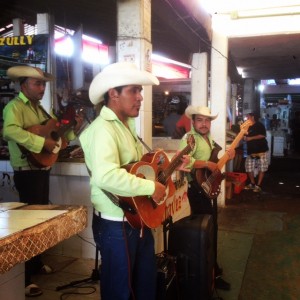 The Zihuatanejo Market band
The Zihuatanejo Market band
Each place we’ve been, the market has a different atmosphere to it, but each is such a local experience that I think wandering through the markets is my favorite part of traveling. Plus, I love loading up on the cheap fruits and veggies.




This morning at the market I got a beet and carrot juice for 30 pesos (almost two dollars) and for less than a buck, a shredded chicken with mole negro sandwich. (Mole is a chili sauce prepared a bunch of different ways depending on region and it’s pronounced “mo-lay”.) We also spent about $15 on: a pound of chopped beef (J wants meatballs), fresh fish from the pescadores selling their morning catch on the beach (R is going to make us tiritas, a local type of ceviche), lots of fruit and vegetables at market – including apples, avocados, limes, an onion, tomatoes, a pineapple, radishes, plums - and 4 fresh baked rolls. Avocados are especially cheap – we can buy three or four depending on size, for a dollar. We are a mango eating family and we are right at the end of mango season so we’ve enjoyed our share of those as well. (On the other hand, we’re also a watermelon eating family and we will likely not buy another. Unlike the US where fruit is GMO’d to our perfectly bland and seedless preference, the watermelons here are full of pesky seeds and we all hate eating them, though we have found a good use for them - watermelon seed poker chips!)


Our first few days in Mexico had us wanting to eat local food but finding it difficult to know what street-side eateries were rundown-looking yet open and which were rundown-looking and closed – there isn’t much difference and only occasionally does the presentation of a place seem to be given any consideration by the proprietor. If we stuck to our ingrained programming of fresh paint and landscaping before considering whether to dine at a particular establishment, we might starve. Fortunately, we also learned before we tried it, that “barbacoa” isn’t the succulent meat grilled over an open fire with a sticky sweet sauce that it sounds like. Instead it’s some kind of cow face stew (cow cheek, cow tongue, cow forehead, cow brain). Though, I may still consider sampling it if the restaurant looks nice.

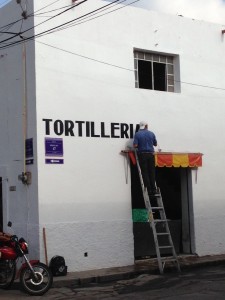
If we can’t find a roadside stand or lunch counter for eats, it’s still pretty cheap to sit in a restaurant. The most we’ve paid for a meal for the four of us is about $35 – and that was more food than we could eat. We usually bring along a Tupperware or Ziploc for the extra rice and beans and tortillas that come with every meal. At the restaurant attached to our Los Azufres camp, where R and I had trout, Coconut had the steak, and J had the chicken, the cook/waitress kept bringing us food even after our plates where cleared and we had the Uno cards out. That meal cost $18 so we did it again the next night.

Being here at the beach has opened up a new food option – seafood! We’ve brought fresh fish at the beach each morning and I learned how to clean and gut a fish, which was easier and smellier than I thought it would be. I saved the fish guts for J and I to use as bait for fishing from the pier. We didn’t catch any fish, but the flies sure liked it. We’ve booked a fishing/snorkeling excursion for tomorrow and the guide will cook whatever we catch. Since J doesn’t eat fish, he is already making plans to sell any fish that he catches. I’m excited by this entrepreneurship, and he’s even offered to sell them to me at a five peso discount since I’m his dad and am paying for him to go on the trip.

The curious thing is that despite the abundance of fresh fruits and vegetables - we've heard even regularly grown crops are more organic here than the organic products at home due to the utter lack of pesticide usage and the reduced-to-zero chance for run off - meals are lacking in these homegrown products. Sometimes a meal will come with a small iceberg lettuce or shredded cabbage salad on the side with onions, and cucumber and tomato slices, but that's about it as far as it goes for a vegetable option. It is not safe to be an animal here, however, as every part of you will get eaten.

The proliferance of meat as the meal, supplemented with carbohydrate-rich rice and beans, as well as the abundance of fried foods - don't forget, even a seemingly healthy chicken taco comes in a fried tortilla - may account for Mexico recently claiming the title of most obese country in the world. And it is fairly obvious, especially amongst the women. Although portions are generally small, the amount of food that comes with a meal often pushes it over the limit of what is necessary to consume to feel full. An enchilada platter, for example, will have three or four enchiladas stuffed with chicken, side salad, rice, beans, tortillas, and may come with a sweetened juice or soda. There's not a lot in that meal that would make your mother happy except maybe the low cost. Stores are full of packaged junk food and it is fattening both the pockets of the bosses of the multinational corporations and the bellies and asses of the public. Just like in the States.
There are signs a public education campaign about healthy diet and exercise may be reaching the middle class masses, at least. In the beach town of Zihuatanejo, which at the moment seems to attract mostly Mexican vacationers rather than American or European gringos, the streets are crowded with early morning joggers and I have seen others using heavy stones as weights. In Hidalgo, nearby the La Posada campground where we stayed, there was exercise trail equipment that people actually used as more than a tableau for graffiti.
Seeing this has been both an inspiration to me, I've been guilted into going jogging a few times, and an albatross, I've gone jogging only a few times. Perhaps because we've been mostly mobile we've failed to establish a regular exercise routine which is something I really thrive on at home as much for the mental benefits as well as the obvious physical ones. We have been fairly active between rock climbing, walking around town, and getting pummeled by the Pacific surf, so we are not totally out of shape and soft yet, but I think a more regimented routine of stretching and resistance movements for the less active days would do us all good.

